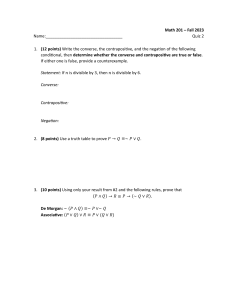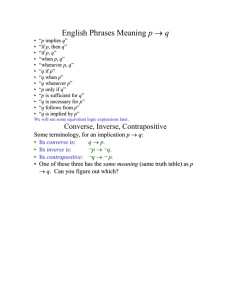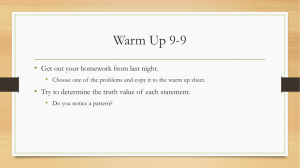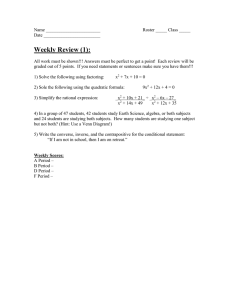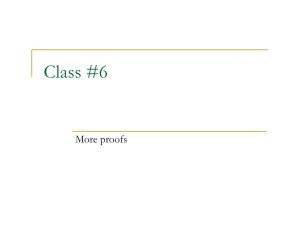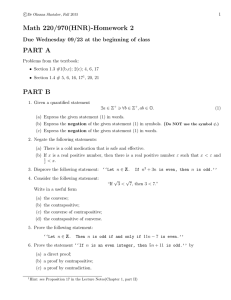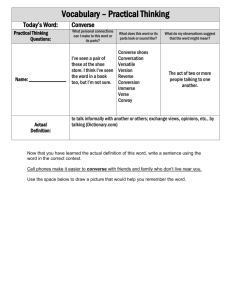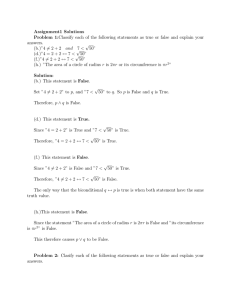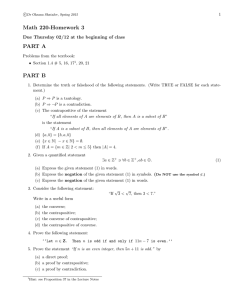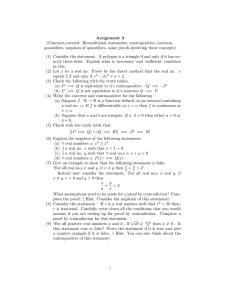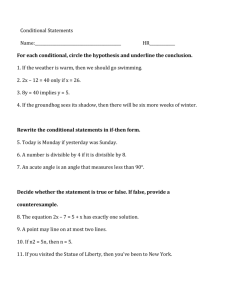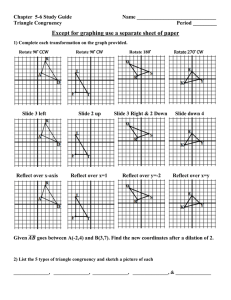Lecture 5 Questions
advertisement
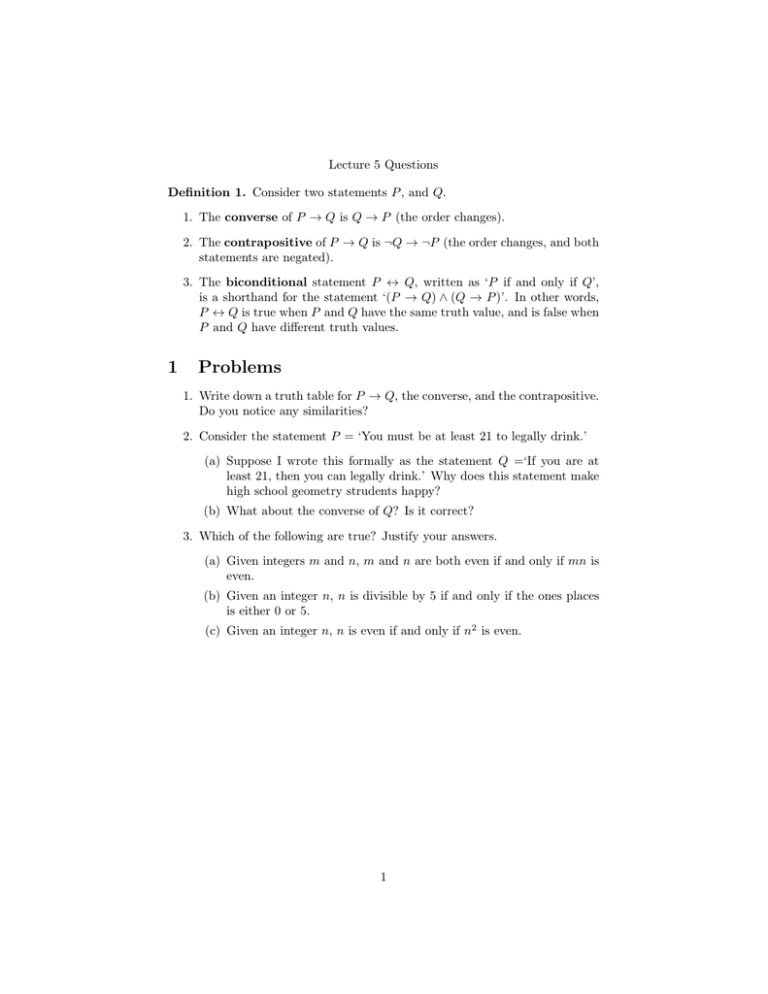
Lecture 5 Questions Definition 1. Consider two statements P , and Q. 1. The converse of P → Q is Q → P (the order changes). 2. The contrapositive of P → Q is ¬Q → ¬P (the order changes, and both statements are negated). 3. The biconditional statement P ↔ Q, written as ‘P if and only if Q’, is a shorthand for the statement ‘(P → Q) ∧ (Q → P )’. In other words, P ↔ Q is true when P and Q have the same truth value, and is false when P and Q have different truth values. 1 Problems 1. Write down a truth table for P → Q, the converse, and the contrapositive. Do you notice any similarities? 2. Consider the statement P = ‘You must be at least 21 to legally drink.’ (a) Suppose I wrote this formally as the statement Q =‘If you are at least 21, then you can legally drink.’ Why does this statement make high school geometry strudents happy? (b) What about the converse of Q? Is it correct? 3. Which of the following are true? Justify your answers. (a) Given integers m and n, m and n are both even if and only if mn is even. (b) Given an integer n, n is divisible by 5 if and only if the ones places is either 0 or 5. (c) Given an integer n, n is even if and only if n2 is even. 1
